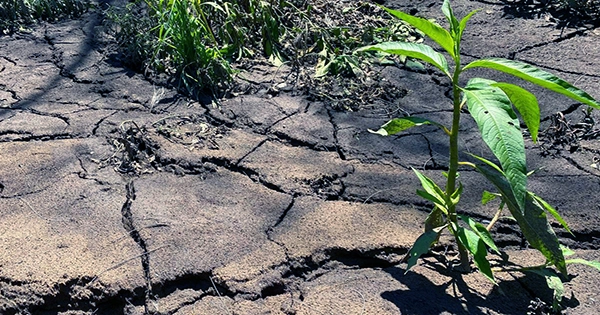A recent study that was published in the journal Trends in Plant Science outlines methods that enable researchers to easily and affordably identify and monitor drought stress in plants. The study’s writers are Sergi Munné-Bosch and Sabina Villadangos from the University of Barcelona’s Faculty of Biology and Institute for Research on Biodiversity (IRBio).
Fighting the Impact of Drought on Plants: There are a variety of extremely straightforward and affordable initiatives (growth or relative water content analysis) as well as more elaborate and expensive methods for identifying and tracking the effects of drought on plants (omics technologies).
These cutting-edge technologies, according to Sergi Munné-Bosch, professor in the Department of Evolutionary Biology, Ecology, and Environmental Sciences at UB, “have provided new opportunities to detect and monitor drought stress, but their cost generates inequalities throughout the world.”
Laboratories with Basic Equipment: The study was created to address the need for simple, affordable methods for identifying droughts and researching their effects on plants. With the aid of standard laboratory tools like a microscope, precision balance, spectrophotometer, centrifuge, oven, camera, and computer, the authors present a number of straightforward techniques.
These laboratories were able to analyze the various parameters on growth rates, leaf water content, pigments, and leaf viability by using the tetrazolium test, an organic heterocyclic compound that has traditionally been used in plant physiology studies.
With these indicators, we can get a complete picture of which species are best adapted to a particular climate, or how a given crop responds to changing conditions in a given region in the current context of climate change. All these measures are easy to conduct. In addition, a specialized team can be assembled in a very short time to develop measures quickly and efficiently. And they can be implemented at a very low cost, so they are viable approaches worldwide.
Sergi Munné-Bosch, Professor, Department of Evolutionary Biology, Ecology, and Environmental Sciences, University of Barcelona
The Tetrazolium Test: In a subsequent investigation, the researchers emphasized the tetrazolium test as a practical and straightforward technique for determining how drought stress affects plants (Trends in Plant Science, 2023).
This test, which is a scientific tool that enables us to forecast how long a plant will live, not only enables us to determine whether a cell, tissue, or organ is living or dead, but it is also a superb indicator of its longevity. In light of the present climate change situation, this can be particularly helpful for biodiversity management and conservation programs, according to the researcher.
Research on how plants adjust to changing environmental circumstances is gaining more attention as a result of climate change.
Developing management strategies and protecting biodiversity globally depend on the development and application of high-quality scientific instruments.
According to UB researcher Sabina Villadangos, “this study contributes to a better understanding of the plants’ reaction to drought in the context of climate change and, in addition, it can be helpful for biodiversity management programs.”
The study also makes it simpler to implement these policies internationally. Sergi Munné-Bosch concluded, “It is important to remember that the effects of global change will be devastating if all nations do not coordinate in the face of foreseeable changes.
















